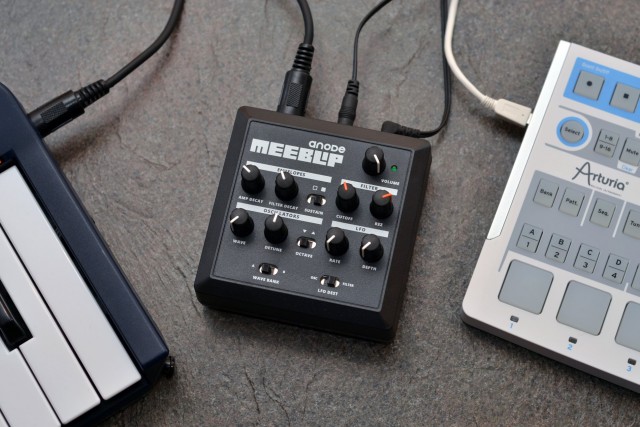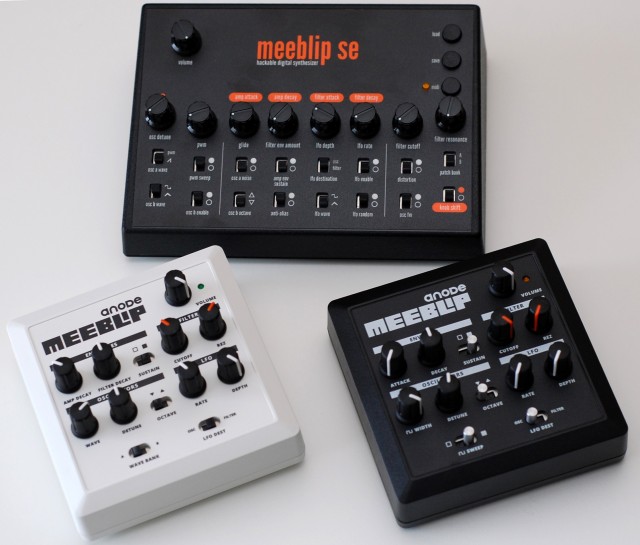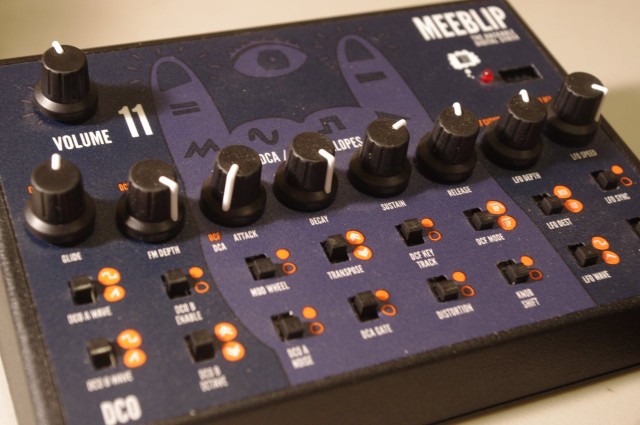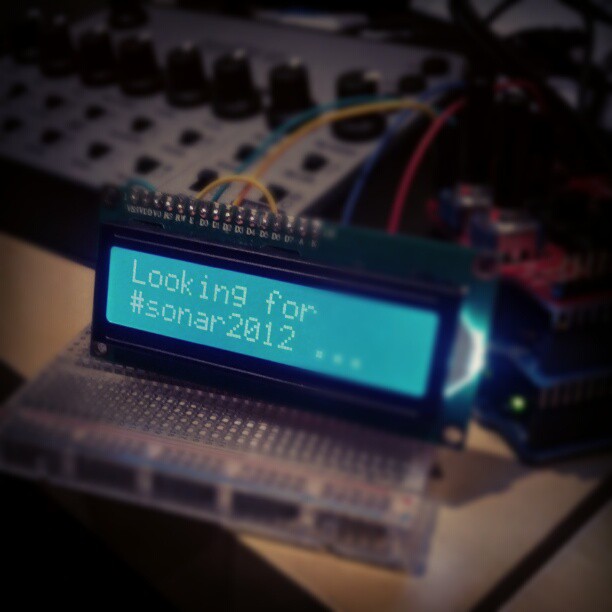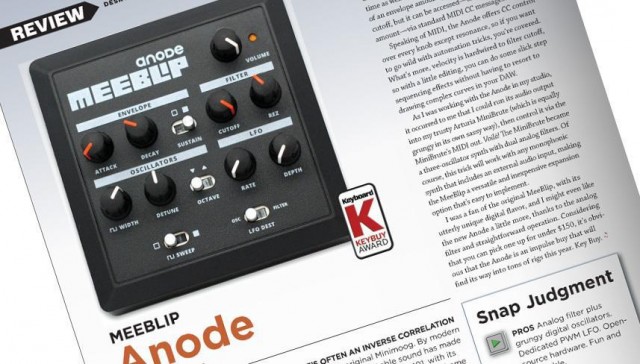Five years ago this month, CDM unveiled the MeeBlip project. It was a chance to put our love of synthesizers into a physical form we could share. And we had no idea where it would take us.
Five years later, we’ve sold thousands of the musical instruments, all engineered by their creator James Grahame in Calgary, and all fully open source. In that time, we’ve also worked hard to make the MeeBlip constantly better, and easier for more people to get their hands on and use. Today, we celebrate five years, and what we think is our best MeeBlip yet. We’re also lowering the price.
The newest MeeBlip anode includes all the features the anode has brought (and that has won rave reviews from the likes of Sound on Sound, Keyboard, and Resident Advisor). That includes its edgy bass sound and analog filter, plus updated features like hands-on control of filter and amplitude envelope, improvements to filter performance, and different built-in wavetables for a wide variety of sound possibilities.
anode is now US$119.95, in celebration of five years of MeeBlip.
Buy one here:
MeeBlip.com
Buy direct
(We’ll also soon have something to announce for European customers wanting faster shipping and all taxes and duty included.)
We’re just getting started. We’ve learned a lot in those five years, and that’s given us ideas for how we can do everything we do a bit better. So thanks for staying with us, and stay tuned for more.
In the meantime, here’s a look back…
The anode is the second major MeeBlip model. Here are three variations together: the SE generation, the original anode, and the special edition anode with wavetables.
The very first MeeBlip had a quirky faceplate designed by Tasmanian designer Nathanael Jeanneret. If you’ve got one of these, they’re pretty rare.
Building on the simple, hackable, open nature of the instrument, projects over the years have included all sorts of fanciful designs. Gwydion ap Dafydd of Konkreet Labs even placed one inside a cookbook:
Synth in a Book from Konkreet Labs on Vimeo.
And Dutch industrial designer / media artist Arvid Jense, while interning with us, made an incredible DIY sequencer/MeeBlip combination to support jamming (see Instructables:
There have been wild mods, like Shawn Rudiman building an entire control voltage-controlled model and an aluminum, rack-mounted case:
It’s been a frequent guest in hack days and hack-a-thons, talking to plants, or to the Internet at SONAR (even before Internet of Things was such a buzzword):
Countless other models have appeared in wild and novel enclosures, as documented on our Pinterest page.
And then came anode. The goal was to design a MeeBlip that was smaller and had fewer knobs – but felt like it had greater, richer sound potential. That meant lots of attention to how parameters were designed, so that each knob turn was satisfying. And we’ve been pleased that reviews from users and press understood and appreciated what we worked on.
But in the end, this is a personal journey. James and I have learned that making instruments means discovering what musicians can do with devices you imagine. The goal is to create objects that become something more than what we can do on our own. That’s why we’ve stayed with it, and why we’ll keep staying with it. So the best part of this job, without question, is seeing what people do – and hearing the results.
There are many examples like that, like this all-anode track produced by Andrius Mamontovas.
We could use your help. Let us know what you think of what we’re doing, and what we can do to do it better. And if you like the MeeBlip, help us spread the word, and get synthesizers in more hands.
MeeBlip anode is in stock and shipping worldwide right now.
And most of all: thank you.
